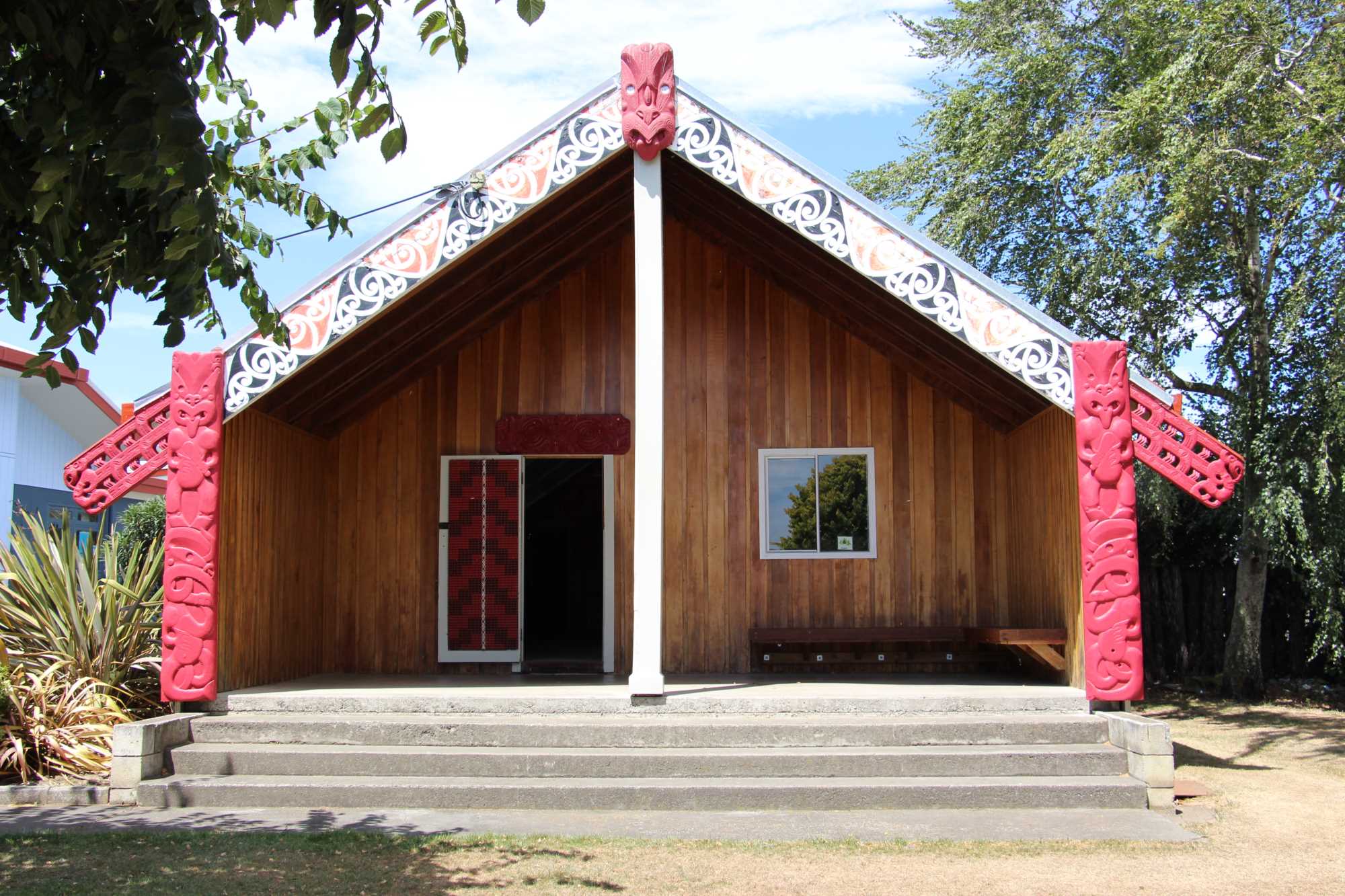Ko Te Hononga Wai te marae
Ko Te Kupenga a Te Huki te whare tipuna


Ko Takitimu te waka,
Ko Tukituki te awa,
Ko Ruahine te pae maunga,
Ko Whatumaa te puna wai e rere ai ngaa manu ki te unu,
Ko Ruataniwha te papatairite te whakakotahitanga o ngaa iwi,
Ko Pukekaihau te taumata,
Ko Te Hononga Wai te marae,
Ko Te Kupenga a Te Huki te whare tipuna.
Te Puawaitanga o Te Kupenga a Te Huki
The blossoming of Te Kupenga a Te Huki
April 1980: Idea put to College staff and received enthusiastically.
May 1980: Tamatea Maaori Executive gives support. College Board of Governors gives provisional approval.
June 1980: P.T.A Consulted
July 1980: Meeting of elders gives support.
August 1980: Pupil vote -2/3 favour idea. Board of Governors sets up committee to make report.
October 1980: Public meeting held.
November 1980: Report to Board recommends that building proceeds.
March 1981: Social evening to raise funds.
April 1981: Timber cut on workday.
May 1981: Ikaroa Festival raises $1,000.
July 1981: Site dedication.
August 1981: Foundations laid.
October 1981: Carving started.
March 1982: Opening and dedication ceremony.
Te Huki was a famous great-grandson of Kahungunu and Rongomai-wahine, ancestors of the great tribe whose lands stretch from Wairoa to Wellington.
Like Kahungunu, Te Huki was famed more for his diplomacy and love of peace than for any warlike qualities.
Te Huki set out to plant unity amongst the people by marrying the daughters of influential chiefts. His first wife was Te Rangi-tohumare, granddaughter of Te Whatui-Apiti, the great chief of the Heretaunga Plains. He also married Te Ropuhina, a chieftainess of Nuhaka, and finally Rewanga, daughter of the chief of Titi-rangi paa.
Te Huki established a league of people from Porangahau to Whangara by setting up his net- known as 'Te Kupenga a Te Huki'. He placed one of his grandsons at Te Poroporo, near Porangahau, to act as the southern post of the net; another grandson at Whangara as the eastern post; and finally his son, Purua-aute, in the centre as the spreading float of his net.
Why this name?
Te Kupenga a Te Huki was chosen as a name because:
1. Like Te Huki's net, the College gathers in its students from a wide area.
2. Te Huki was a man who worked for peace.
3. Te Kupenga a Te Huki brought unity to the people of this area and by bestowing upon them a common heritage strengthened them in times of strife.
External Features
The carvings on the front of Te Kupenga a Te Huki were completed by Mr Taka Walker and are representative of the following:
Koruru- Purua-aute, The son of Te Huki, who was the 'Float' of Te Huki's net.
Left Amo-(Looking from gate) Ngarangi-Whakaupoko this grandson of Te Huki was stationed at Te Poroporo as the southern post of the net.
Right Amo- Ngawhaka-Tatare another grandson who was stationed at Whangara as the eastern post.
Raparapa- These are the fingers which bring strength to the house from Papatuuaanuku, mother earth.
Maihi- the koowhaiwhai patterns on the maihi represent Te Huki's net, drawing his people together.
Points of interest
The house has some unusual features in the material used to construct it. The framing, flooring and exterior cladding are largely macrocarpa, but much of the rest is built from native timbers. The centre poles are young totara trees and some of the cladding inside as well as the front porch wall is also totara. The side walls of the front are built from matai which was recovered from the old Waipawa school. Panels of matai inside come from a tree which was recovered from the Tukituki river. It has been estimated that the tree had lain in the river for around 300 years. The different panels of native timbers under the windows are there so that students might be able to see timbers which have become all too rare.

Visit Us
45 Tavistock Road
Waipukurau, 4200
New Zealand
RESPECT
WHAKANUIA
We value ourselves, others and our school
INTEGRITY
MANATANGATA
We can be trusted
COMMUNITY
IWI KAINGA
We include and care for others
EXCELLENCE
HIRANGA
We aspire to be all that we can be





 Admin Login
Admin Login